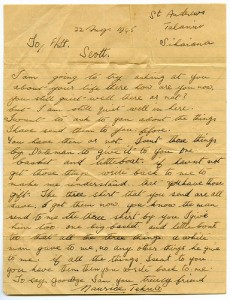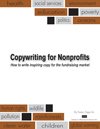Want to raise more funds for your nonprofit? Want to acquire more donors and members? Want to retain more donors or members? Great content is the key.
 Whether this content is on your website, in your direct mail letters, in emails, or in any other form of communication . . . it must satisfy basic criteria in order to get the job done right for your nonprofit. Heck, even your Tweets at 140 characters are included in this.
Whether this content is on your website, in your direct mail letters, in emails, or in any other form of communication . . . it must satisfy basic criteria in order to get the job done right for your nonprofit. Heck, even your Tweets at 140 characters are included in this.
Here are six principles to consider when creating your content for your marketing and fundraising:
1 – Be the donor. Be the member. Be the prospect. Be the advocate. Be the volunteer.
Everything starts with the “buyer’s” [donor, member, prospect, etc.] challenges, prejudices, interests, concerns.
This is another way of saying: Write reader-centric copy.
2 – Be authoritative.
By authority, I mean write simply and plainly about what you know best – your nonprofit mission.
When you write from a position of authority, you write useful, interesting content. When you bluff or write in sweeping generalities, you write hollow, obvious content that may sound good but convinces no one.
One way to do this is to use nonprofit stories. Don’t vaguely describe how you help people. How you save animals. Or how you make a person’s career more successful.
Instead use stories filled with specifics – people, animals, etc. In addition, use real photos (not stock photos – ugh!). Do this and your writing will come alive. It’s more tangible and real. You’ll touch your readers at a deeper emotional level and thus increase the likelihood of a response.
What’s more, avoid bragging about what your organization does. Instead talk about what your supporters accomplish.
Finally, make the time to find out what is of the greatest interest and concern to your readers. And write about that more than anything else. Use tailored communications whenever possible instead of blast emails or letters. Put your reader in the spotlight and you’ll be authoritative and communicate with clarity.
3 – Be strategic. Have a plan.
Your resources are limited. Not only that, but other nonprofits (charities and associations) are getting good at this. So if you don’t … then you lose. Donors give their money to a charity other than yours. Members don’t renew or purchase any of your webinars, event tickets, etc.
Simply put: Outline who you want to reach, what you need them to do, what content you’ll create to encourage them to do it, how you’ll get the content under their noses, when you’ll do all this, and how you’ll measure success.
4 – Be prolific.
This is a marathon. Not a sprint.
Recognize that each email, social media update, direct mail letter, press release, etc. has a shorter and shorter life span. A shorter time period when people read it, share it, respond to it.
Therefore you need to build an efficient content machine that can keep the frequency up without sacrificing quality.
That means a good mix of content types, from Tweets to blog posts … short videos to quick blog posts … emails to direct mail letters … webinars and everything in between.
Don’t misunderstand this next statement as being self-serving: To accomplish all this you need to find the best talent you can afford.
5 – Be passionate. Be enthusiastic.
If you don’t care, why should anyone else care?
And this passion must come through in your marketing and fundraising messages. It must be clear that you not only care about your mission, but you care about the people reading your message. You don’t merely view them as a source of money.
And if you can’t write about it in a way that makes the reader feel your passion, then find someone who can (take another look at Principle #4). The other part of this is that even though you may be deeply passionate about your mission . . . it doesn’t automatically follow that you can do a great job of writing about it.
This leads me to #6.
6 – Be tough on yourself.
Don’t be lazy.
Great content … writing great fundraising letters and emails take work. Make the time to make each piece as good as it can be. And ladies and gentlemen, that means writing and rewriting and going through this cycle multiple times. Copywriting is hard work.
Respect the time of those reading your messages. You want them to respond, right? Then make it worth their time to read it and be moved to action. Have you written about what’s most important to your readers? Have you written donor-centric copy? Have you told a powerful story? Have you given this communication everything you have to give?
Cut corners; get lazy and you raise a small fraction of what’s possible.
Be the reader. Be authoritative. Be strategic. Be prolific. Be passionate. Be tough on yourself.
Follow those six principles of writing great nonprofit content and your charity or association will enjoy higher response. And that means more funds raised.
Any more principles to add to this list?
More related posts:
A Nonprofit Winning with Content Marketing
Integrated Fundraising for Nonprofit Success
—————-
Photo credit: “adelaide_archivist“ via Flickr and PhotoPin.com
Idea for this post courtesy of Marketing Profs

{ 2 trackbacks }
{ 0 comments… add one now }